A View from All Sides
A View from All Sides Conference The Children’s Trust is hosting the following…
Home / Read the Report
Educating Children and Youth
All children and youth need to receive education about preventing abuse, neglect, bullying and harassment. This education is best adapted to an age-appropriate level to promote their understanding of, and confidence in the organization’s strategies to keep them safe. However, not all YSOs will be capable of providing prevention training to the children/youth who attend their programs or utilize their services. In these cases, codes of conduct, mission statements, handouts on rules and regulations, orientation meetings, and other means of communication can be used to define for children and youth the elements of being safe. If it is within the scope of the YSO’s responsibilities, children and youth should be provided an understanding of:
Critical Content for Training Children and Youth
The chart below identifies some of the grade-appropriate learning standards and lesson objectives gathered from several sources.
| Learning Standards | Lesson Objectives | |
| Grades K-3 | – List rules for safety at home, school, community. – Distinguish among safe, unsafe, and inappropriate touch. – Demonstrate the use of assertive behavior, refusal skills, and actions intended for personal safety. | – Identify general safety rules. – Identify the “always ask first rule.” – Identify safe and unsafe touches. – Identify the “touching rule.” – Identify and practice rules for personal safety: say no, get away, tell a grown-up. – Identify grown-ups you can go to for help. |
| Grades 4-6 | – Describe actions & behaviors to protect oneself when alone at home or in the community. – Distinguish among safe, unsafe, & inappropriate touch. – Demonstrate the use of assertive behavior, refusal skills, and actions intended for personal safety. | – Identify and practice safety rules when alone at home or in the community. – Summarize the difference between appropriate & inappropriate touch. – Describe what to do to protect oneself in situations involving unwanted or inappropriate touch. – Identify and practice skills for standing up to pressure from other people. – Summarize ways to respond to sexual abuse. – Identify appropriate sources for help. |
| Grades 7-9 | – Distinguish between healthy & unhealthy interpersonal relationships. – Define sexual harassment in the context of schools and other youth settings. – Recognize sexual abuse and sexual assault. – Describe actions & behaviors to protect oneself from sexual abuse and how to seek help. | – Examine the potential impact of healthy & harmful relationships. – Identify personal boundaries & practice communicating boundaries to others. – Identify & practice skills for dealing with both physical and online sexual harassment. – Identify the warning signs of potential danger in relationships. Identify ways to stay out of danger in relationships. – Identify where help can be located. |
| Grades 10-12 | – Define sexual assault terms and refamiliarize students with the general topic of sexual abuse. – Demonstrate prevention skills in a variety of scenarios and circumstances. – Understand the personal and community resources available if one is harassed or victimized. | – Define and contrast aggressive, passive, and assertive behaviors. – Explain acquaintance rape, sexual assault, incest and trafficking as forms of child sexual abuse. – Understand laws regarding types of abuse and reporting guidelines. – Specify personal and local community resources for victims of sexual abuse. – List and explain several prevention guidelines. – Summarize facts on offenders, victims, and ways victims get trapped. – Classify options for victims to extricate themselves from the abusive environment. |
Elements to Consider when Identifying Potential Training Curricula for Children and Youth
Resources and reports that identify abuse prevention curricula that have been evaluated for effectiveness.
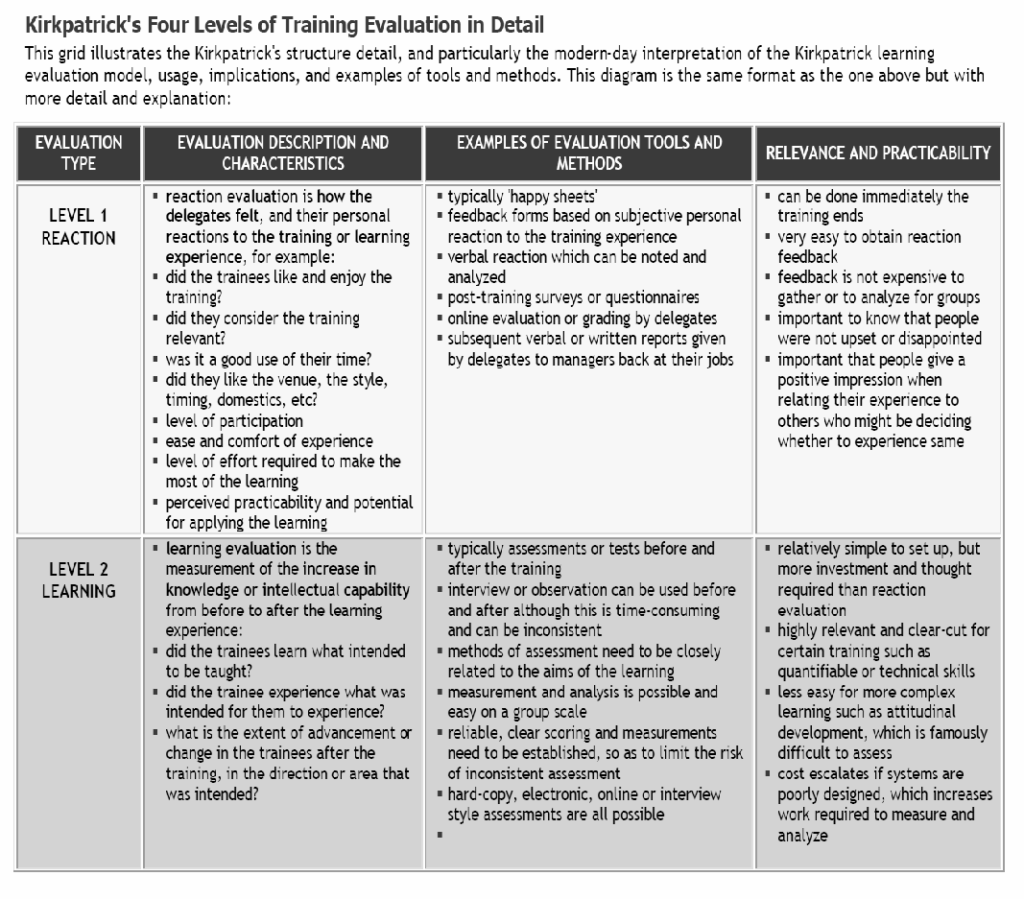
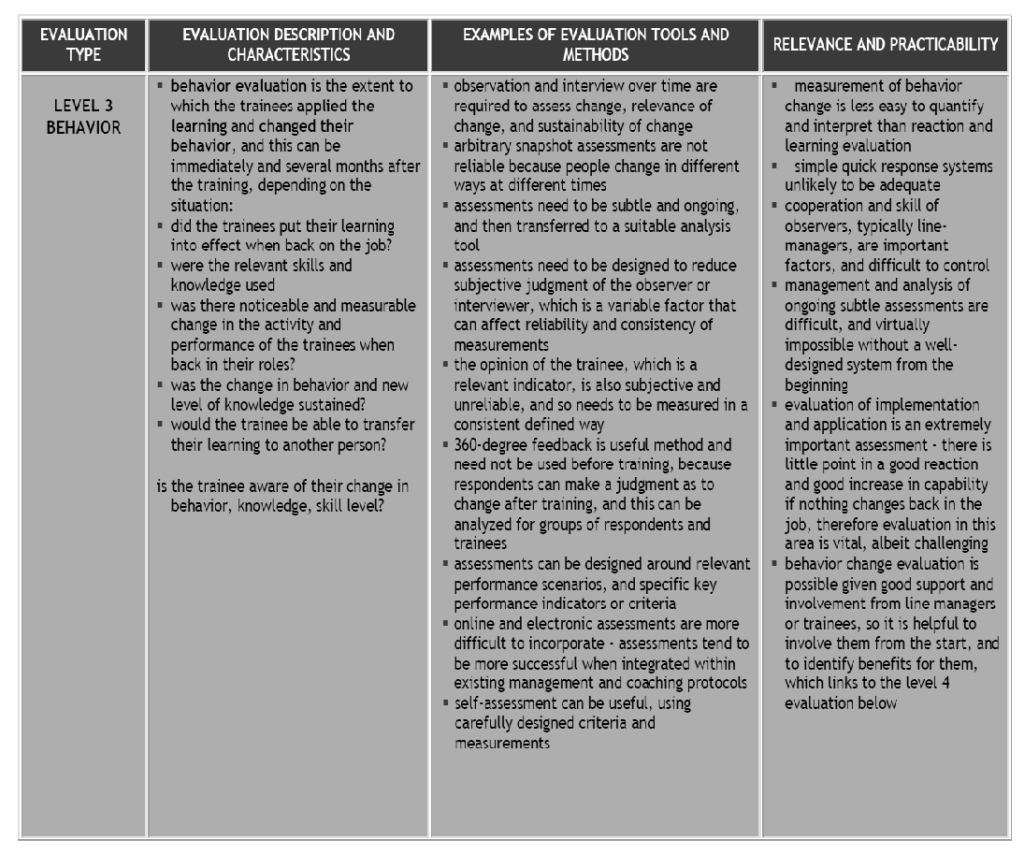

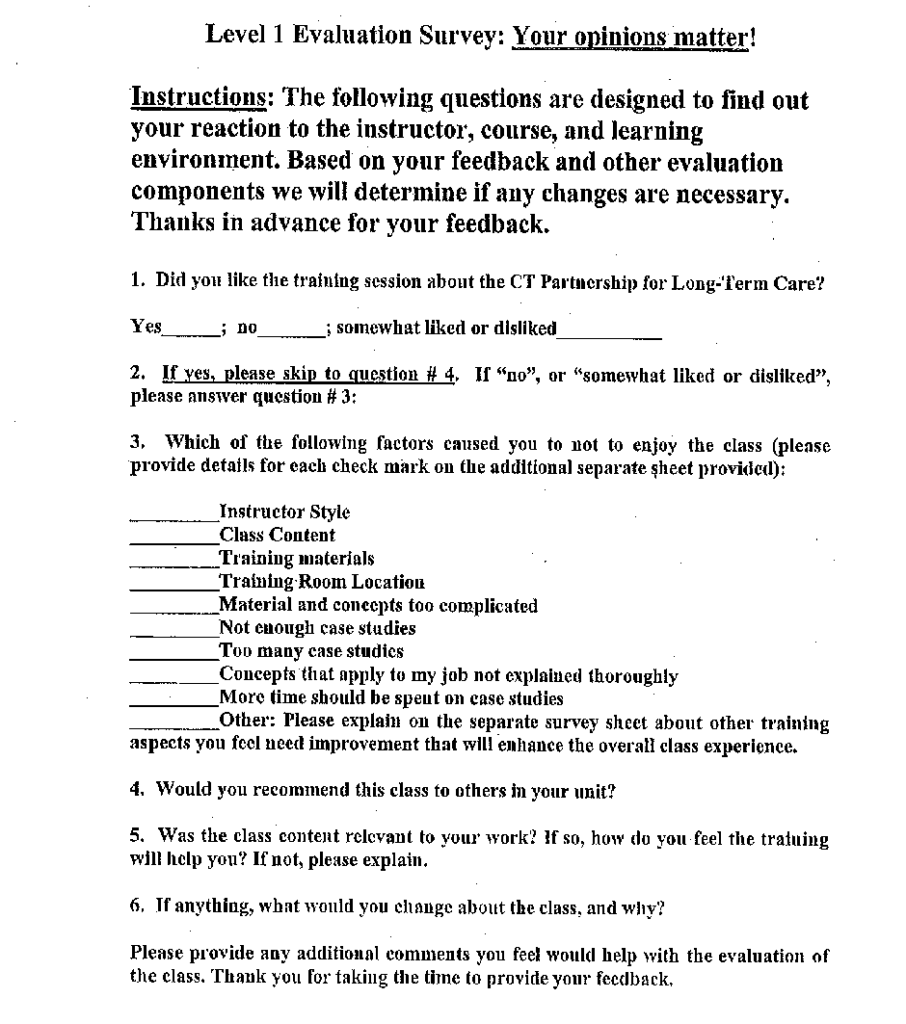
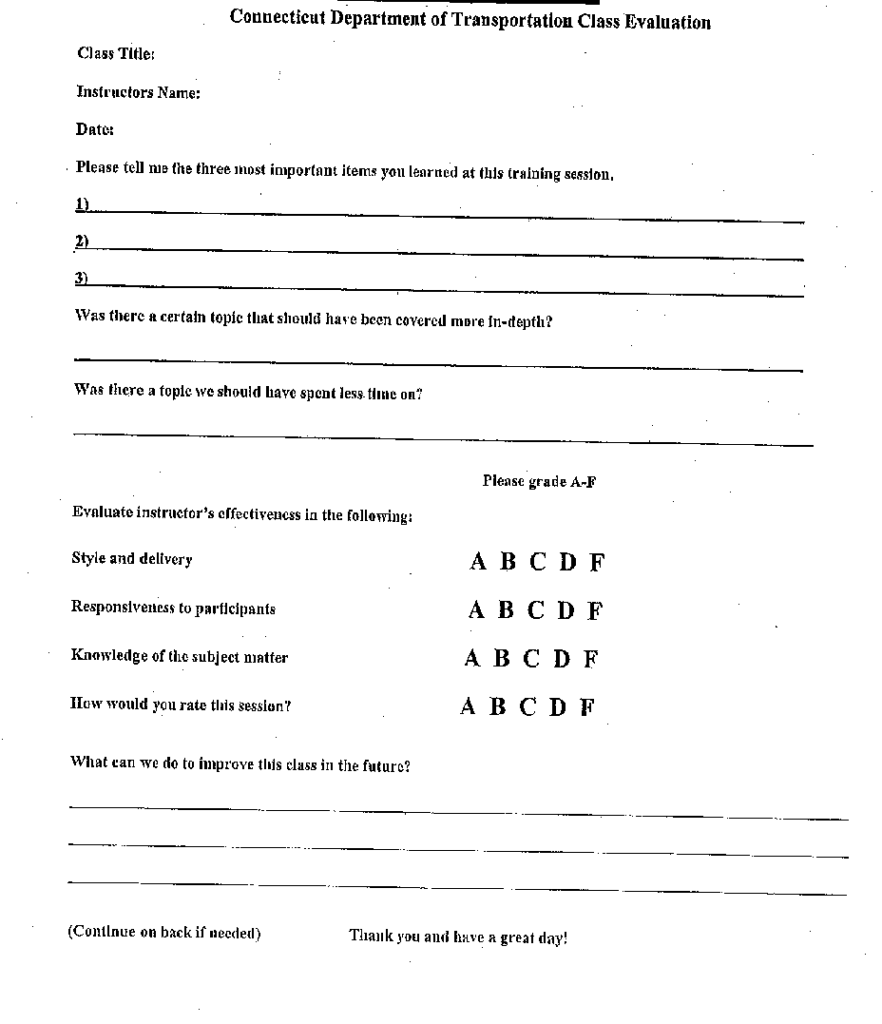
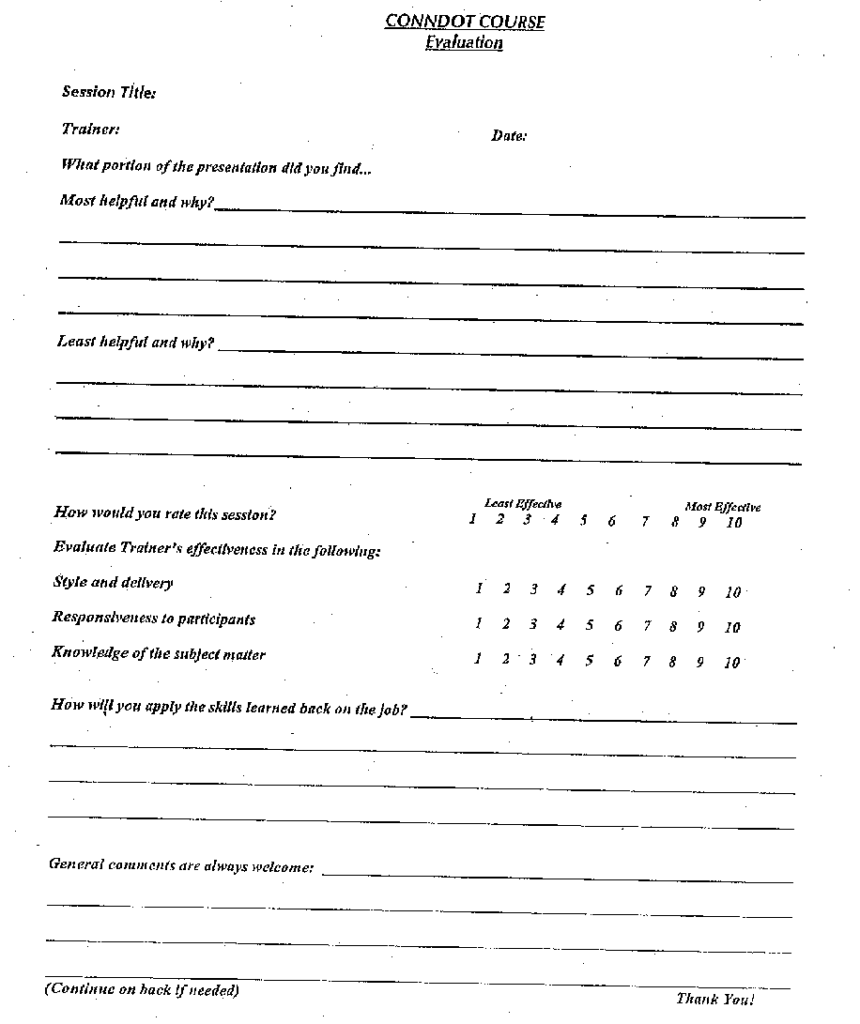
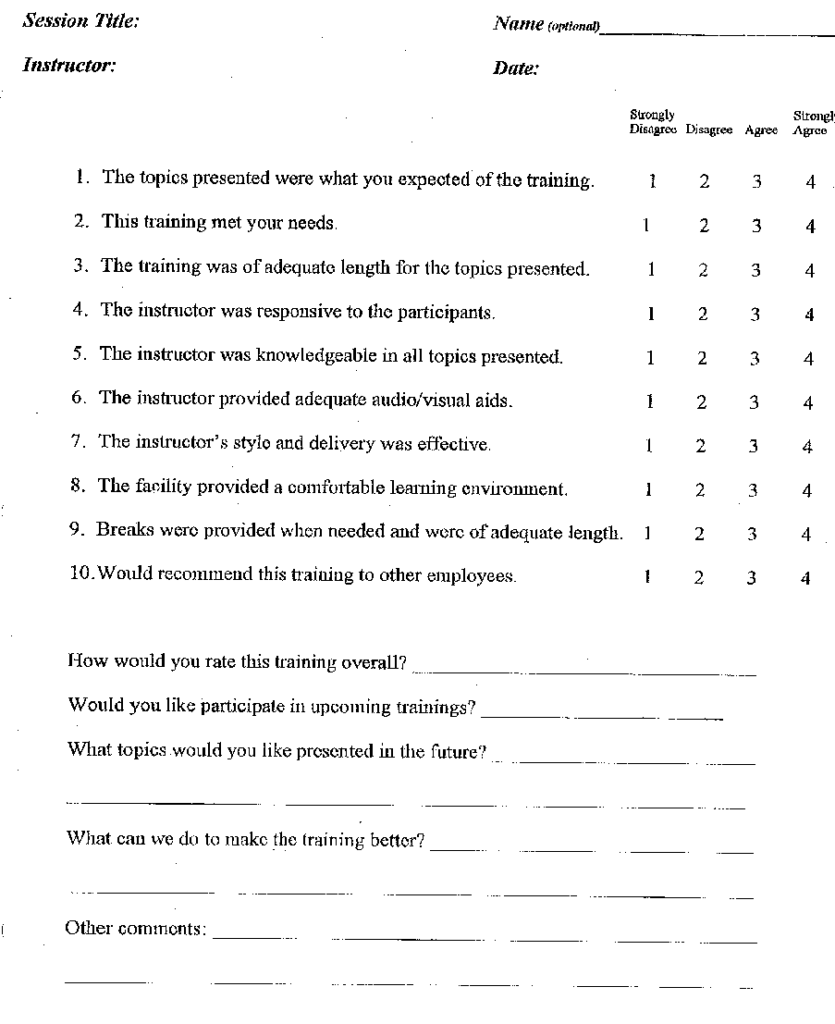
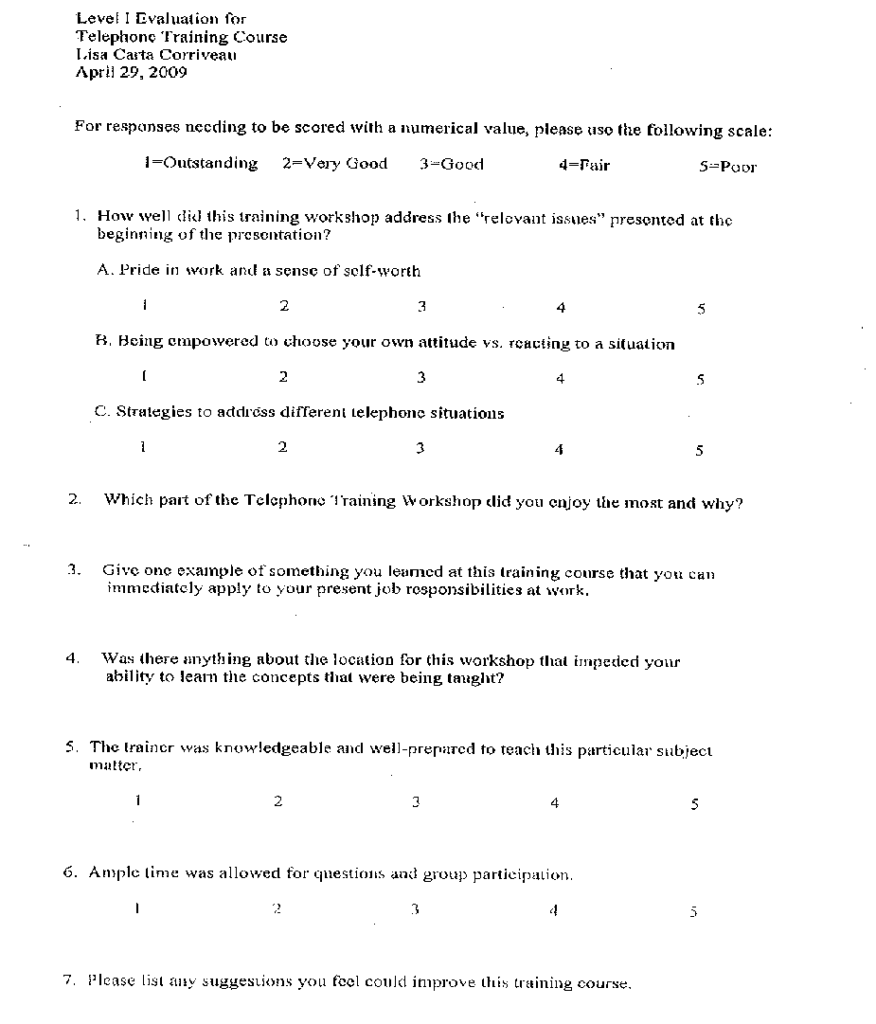
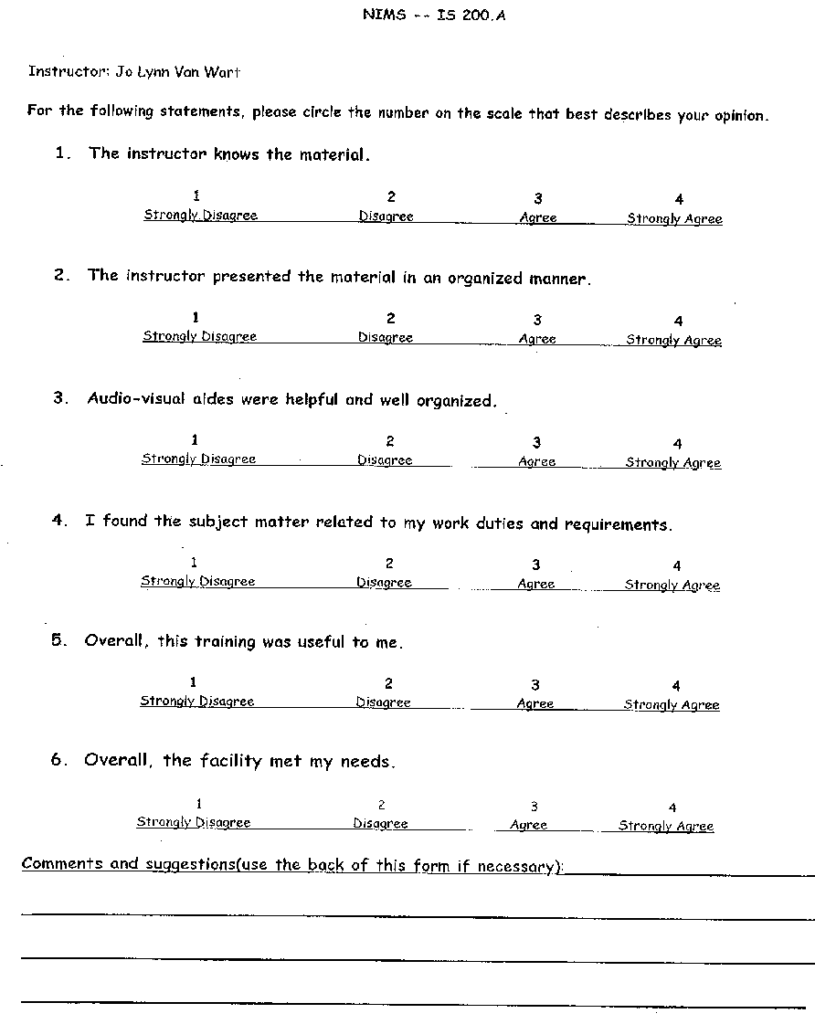
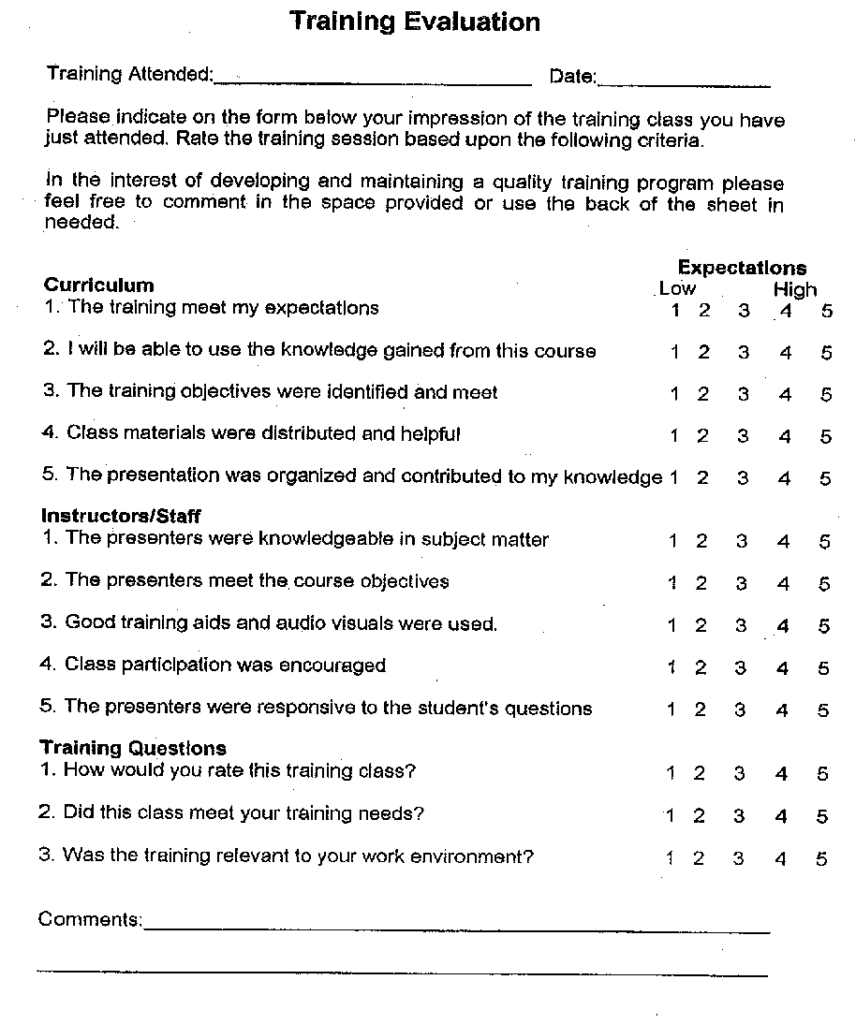
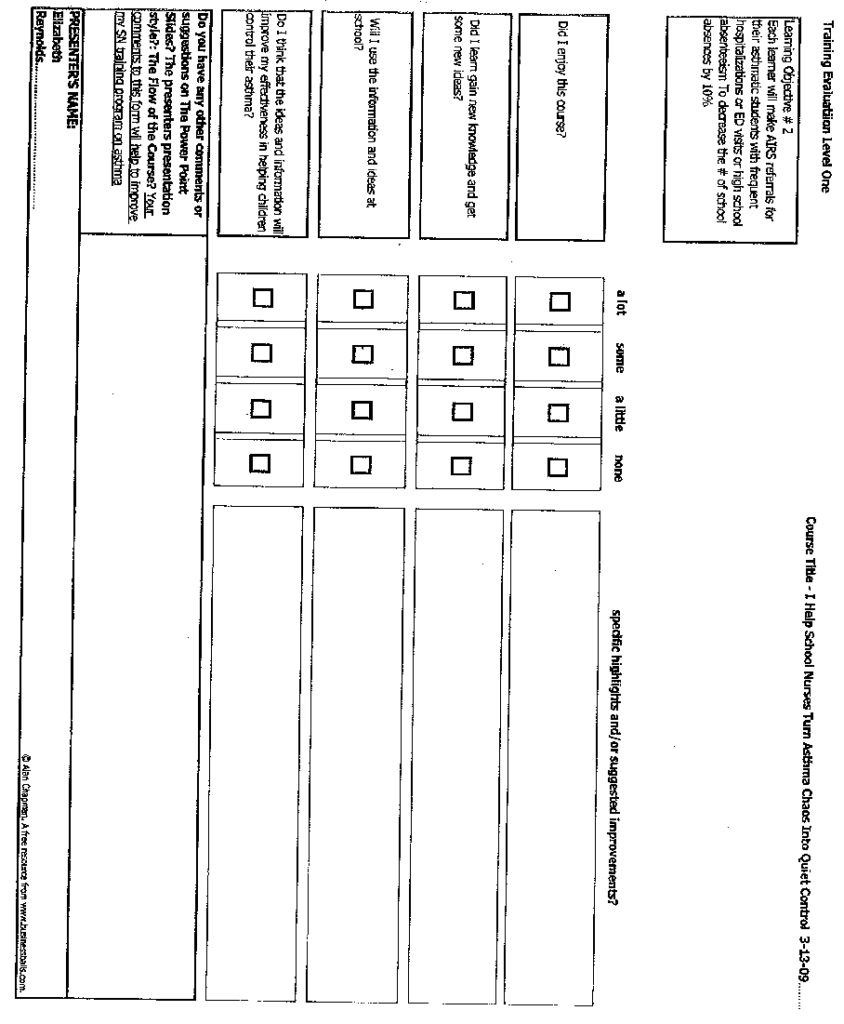
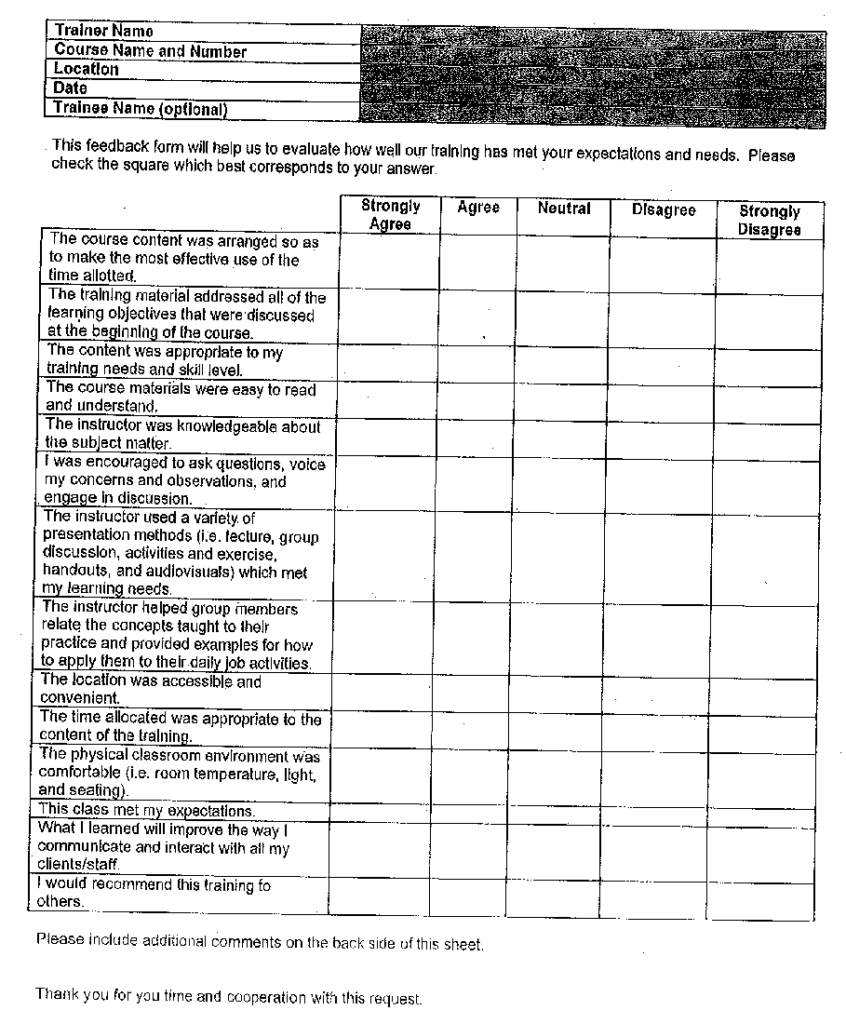
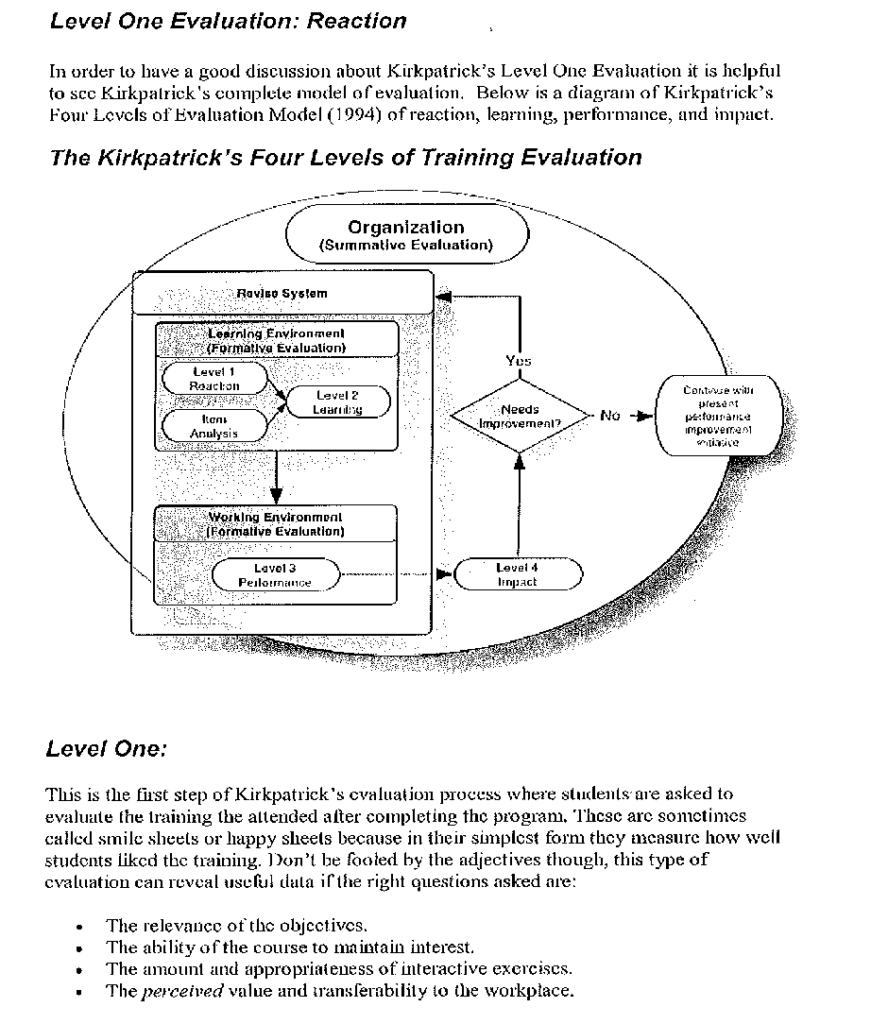
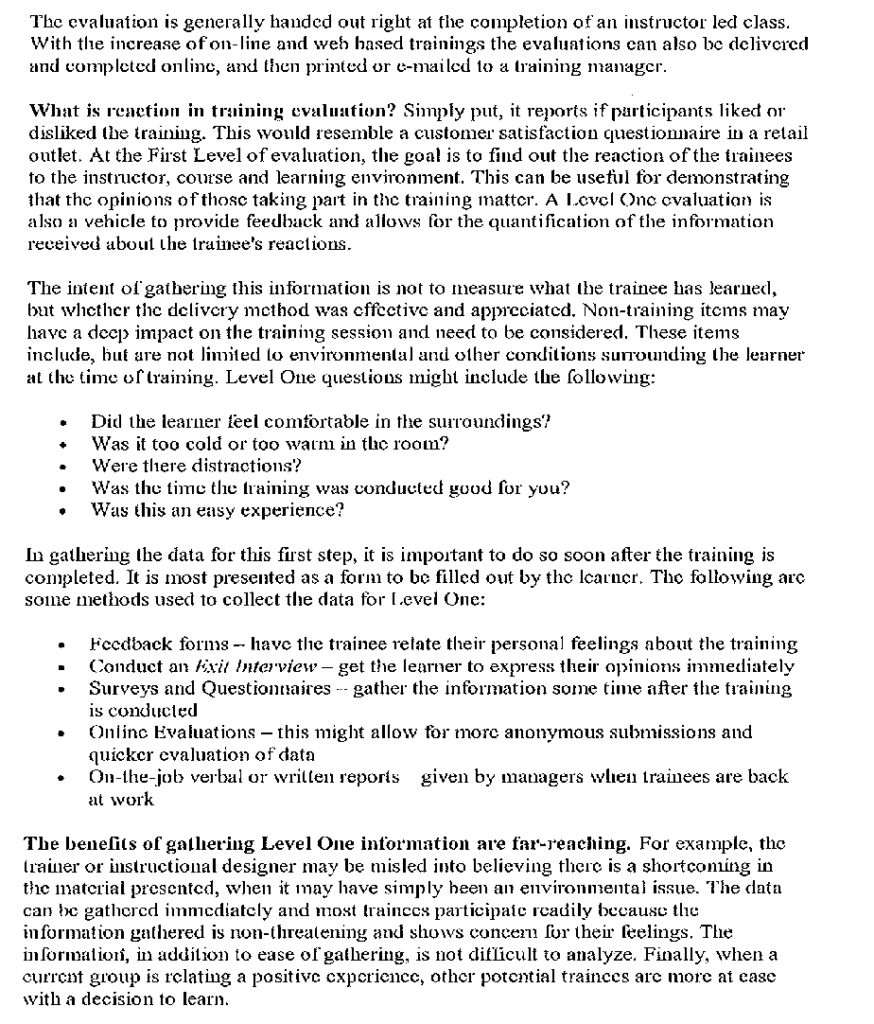
There are those who dislike the Level One Evaluation and scoff at its results being scientific and controlled. Some suggest that just one question need be answered: “Would you recommend this course to a friend or colleague? Why or why not?”
Every training intervention needs some kind of feedback loop, to make sure that within the context of the learning objectives it is relevant, appropriately designed, and competently executed.
At Level I the intention is not to measure if, or to what extent, learning took place (that’s Level 2); nor is it intended to examine the learner’s ability to transfer the skills or knowledge from the classroom to the workplace (Level 3); nor does it attempt to judge the ultimate impact of the learning on the business (LeveI4). Level I of Kirkpatrick’s model is intended simply to gauge learner satisfaction.
The concern or disdain of the Level One Evaluation in many cases comes from poorly designed evaluations that may “steer” respondents. Too many close ended questions without room for comment limit attendee’s comments. The type of questions asked can limit the areas the student is “allowed” to evaluate. Open ended questions while tedious may provide fuller feedback,
Trainers also need to understand that sound analytical evaluations often require multistage studies. Your end-of-course feedback may indicate a problem area, but will not tell you specifically what the problem is. A follow-up survey, by questionnaire, by informal conversation, or by holding a brief focus group, will tell you a great deal more than you could possibly find out under end-of-course conditions.
The level one evaluation none-the-less is an important first step. We need to remember the word level one does indeed imply there are more levels of evaluation. These successive evaluations will help dig deeper into the training experience and assist with identifying that your training programs helped move the organization toward realizing business outcomes. Understanding the objectives/outcomes of any training goal prior to class design will always be the key measure of a successful training program. Without precise and clear objectives the ultimate success of a training program cannot be measured.
The good news about the level one evaluation is that learners are keenly aware of what they need to know to accomplish a task. If the training program fails to satisfy their needs, a thoughtful evaluation will allow the opportunity to determine whether it’s the fault of the program design or delivery.
References:
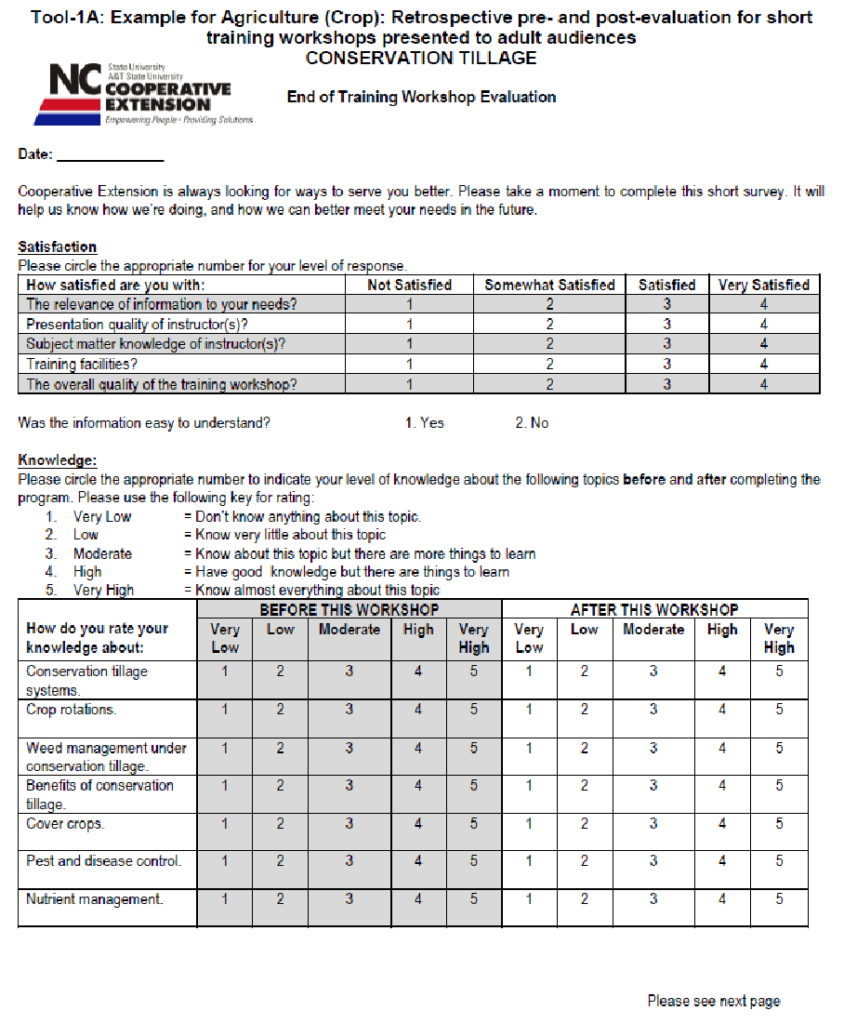
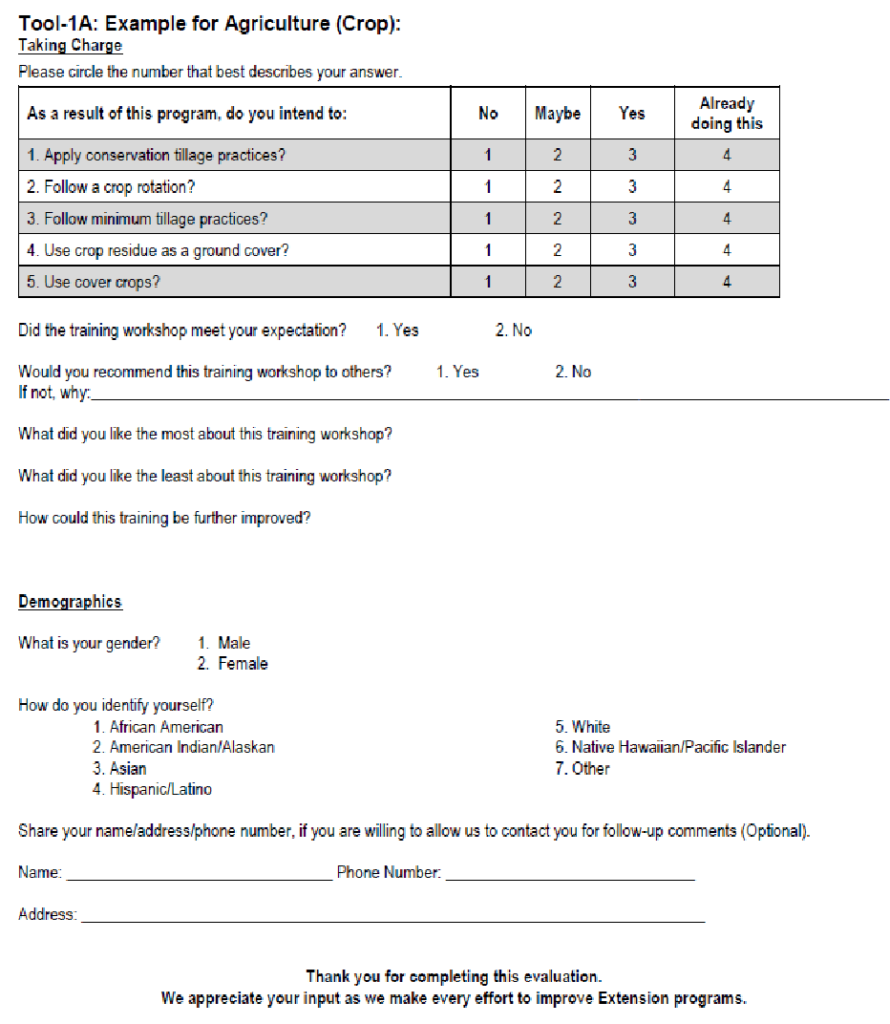
1 Finkelhor, D., & Dziuba-Leatherman, J. (1995). Victimization prevention programs: A national survey of children’s exposure and reactions. Child Abuse & Neglect, 19, 129-139.
2 Casper, R. Characteristics of Children Who Experience Positive or Negative Reactions to a Sexual Abuse Prevention Program (1999) Journal of Child Sexual Abuse Vol. 7, Iss. 4,1999.
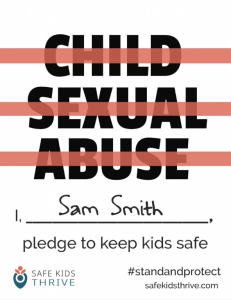
Join us and commit to learning how you can protect the children you serve.
Customized child sexual abuse prevention guidelines to meet the unique needs of any organization that serves children.
Safe Kids Thrive is managed by the Children's Trust of Massachusetts
Learning Center Registration
Sign up for an account and start your learning experience.
Free Online Assessment
Let us help you find out where to start.
